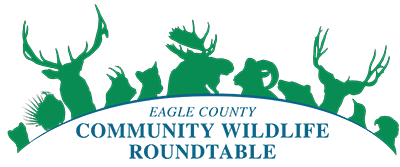Wolves
Kathryn Middleton
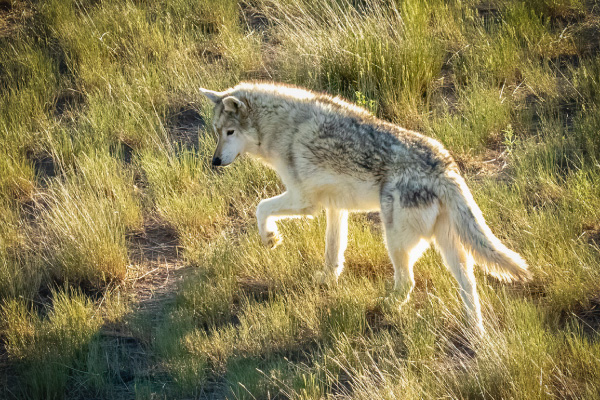
Re- Thinking Like a Mountain, by Aldo Leopold, “I now suspect that just as a deer herd lives in mortal fear of its wolves, so does a mountain live in mortal fear of its deer. And perhaps with better cause, for while a buck pulled down by wolves can be replaced in two or three years, a range pulled down by too many deer may fail replacement in as many decades.” A new look at Aldo Leopold’s classic.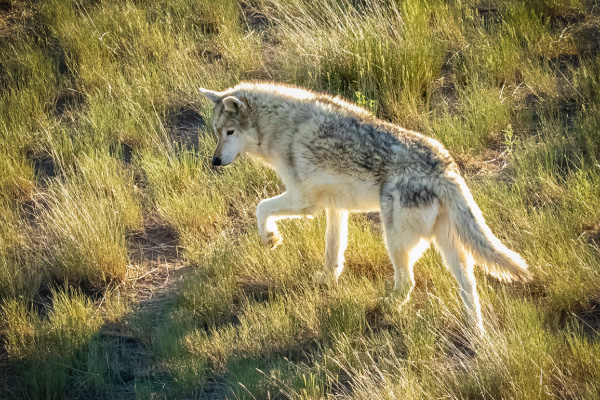
A complexity of factors related to wolf reintroduction created the necessity to develop a comprehensive wolf management plan.
It may be hard for us to imagine Colorado when wolves roamed the landscape. From 1850 to 1940, it is estimated that one-million wolves were extirpated throughout Colorado and the west (Peterson, 2005). However, there is a new dawn on the horizon for wolves in Colorado. Last November, Ballot Proposition 114 narrowly passed to restore wolves back to the Colorado landscape.
The passage of Ballot Proposition 114 marks the beginning of a three-year process that begins with the development of a wolf management plan using the best scientific data available before wolves will be reintroduced in 2023. Here is Colorado Parks & Wildlife’s up to date website on the progress of the management plan, https://cpw.state.co.us/learn/Pages/Wolves-Stay-Informed.aspx. Stakeholders and the general public will be tasked with learning, understanding and compromising on what wolves in Colorado will look like to make the program a success. Colorado passed Ballot Proposition 114, in November of 2020, to restore wolves back to the Colorado landscape by 2023.
Colorado passed Ballot Proposition 114, in November of 2020, to restore wolves back to the Colorado landscape by 2023.
Wolf restoration in Colorado is a contentious and complex issue. The aim is to engage in a balanced conversation about wolf reintroduction to enhance collaborative efforts to minimize livestock-wolf conflict and human-wolf conflict. Opposition to wolf reintroduction from some ranchers and landowners who have historical views and experiential reasons about wolf presence is valid. This is due in part to the inherent threat wolves may pose to their livestock herds as well as the amount of federal/state funds provided for reimbursement.
There is also the potential for human-wolf conflict since we live and recreate in shared habitats with wolves. Public lands and open spaces are areas where wolves could thrive but could increase the risk of livestock-wolf encounters and the potential for human-wolf conflict. The overarching goal is to develop long-term approaches to support successful wolf reintroduction that fosters the sustainability of the species and reduces the potential for conflict.
Wolves are elusive animals and are generally afraid of humans. In contrast, folklore instilled a negative perspective on wolves, and the human fear of wolves which can be traced back to Europe in the Middle Ages. For example, wolves’ reputations were based on cautionary tales in Aesop’s Fables, and Grimms’ Fairy Tales, and mythologies from medieval writings such as “Little Red Riding Hood and the Big Bad Wolf” and “The Three Little Pigs.”
Colloquialisms like, “A wolf in sheep’s clothing” also built fear in the minds of our ancestors. However, the old avarice toward wolves has worn away over the last century as wolves have begun to repopulate some of their historical ranges.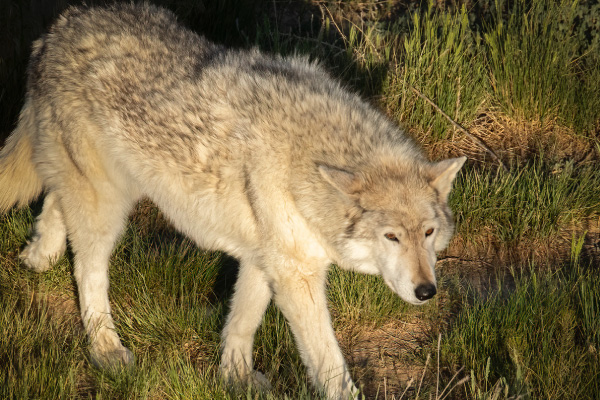 Opposition to wolf reintroduction from some ranchers and landowners who have historical views and experiential reasons about wolf presence is valid, though a shift may be occurring in people's attitudes and perceptions about wolves.
Opposition to wolf reintroduction from some ranchers and landowners who have historical views and experiential reasons about wolf presence is valid, though a shift may be occurring in people's attitudes and perceptions about wolves.
The perception of wolves has evolved over the years. As wolves are reintroduced to Colorado, Colorado Parks and Wildlife (CPW) will need to find a balance between many viewpoints. There is some evidence that a shift may be occurring in people's attitudes and perceptions about wolves (Peterson, 2007). In many locations throughout the United States, urbanization has caused people to live further from wild areas and people’s understanding of wildlife has waned.
In Colorado, the urban-wildlife interface is more complex in that many Coloradans live and seek adventure in the vast public lands and outdoor spaces. While there is still a lack of understanding of wildlife management, Coloradans are far more used to living along the urban-wild barrier.
Some of the unique factors facing wolf reintroduction in Colorado include ranchers' concerns about a potential loss of livestock, the possibility of humans encountering wolves while out recreating, and determining where and whether there is an abundance of prey present to support wolf reintroduction. The complexity of these factors create a need for a comprehensive wolf management plan.
Another issue may evolve if wolf prey populations have diminished in the gray wolf’s historical range, now impacted by development or from potential effects of climate change on herbivore and carnivore food sources in western Colorado. As part of the gray wolf management plans being developed, Colorado Parks and Wildlife (CPW), will need to determine if some locales on the western slope that are not experiencing an overabundance of prey-base species could support wolf reintroduction.
These locales may require significant management considerations before another apex predator can be introduced. These considerations may run the gamut of predator management, big game management, and social tolerance. It’s important to note that some geographic areas already have a proclivity for declining ungulate populations that might continue to struggle in the face of another apex predator reintroduction (CPW).
Efforts to manage and educate major stakeholders to balance living with wolves can happen through examples of existing state livestock, wildlife, and wolf management plans coupled with human awareness campaigns. The Oregon Department of Fish and Wildlife has incorporated a few safeguards for livestock management that include monitoring wolf activity by radio collars, fencing and guard animals (“Ranchers discuss ways”, 2013).
Perhaps interactive signage and local newspaper announcements on proper behavior in cases of wolf activity in areas where humans and wolves coexist can help increase public safety. The current signage and public social media notifications for mountain lion and bear activity could serve as a model for potential wolf encounters.
Some studies in national parks have indicated that wolves might impact biological communities. These studies may provide evidence that demonstrates how the 1995 wolf reintroduction program in Yellowstone National Park improved the symbiotic relationships between wolves, elk, and woody plants (willows, cottonwood, and aspen trees).
While the research out of Yellowstone National Park is compelling, extrapolating those findings and applying them to western Colorado is not necessarily appropriate. While much remains to be learned from data collected during the wolf reintroduction effort, it is not expected that wolves will have this effect outside of National Parks, and throughout all of western Colorado.
Wolf studies have shown that wolves are an opportunistic predator species who consume whatever sustenance is most abundant (Janiero-Otero et al., 2020) including wolves preying on domestic livestock and animals. Research on effective livestock-wolf conflict methods for range livestock include, not removing horns from cattle, and fitting some livestock with protective collars. Guardian animals have also proven to be an effective defense mechanism for unattended, freely grazing livestock herds (Janeiro-Otero et al., 2020). These are just a few examples. When wolf reintroduction occurs, initiating more robust types of education and engagement may influence positive change in the common beliefs within the local community that will aid in the success of the program for all stakeholder groups in Colorado.
Overall, to improve discourse and have a balanced conversion about wolf reintroduction in Colorado, we need to look at different angles for expanding education and outreach for both the public and major stakeholders to find common themes and prioritize issues for wolf reintroduction to become a viable reality. This is an educational process that is evolving and needs time for cultivation to gain an understanding of collective stakeholder attitudes to create collaborative efforts to minimize fear and increase understanding about wolf reintroduction.
Let’s do the best we can to get educated on the implementation of Proposition 114, read the work that has been done so far (but be careful to not over extrapolate), and work together to create a successful wolf reintroduction program in 2023. Colorado Parks & Wildlife welcomes your feedback on their wolf reintroduction website “Stay Informed” https://cpw.state.co.us/learn/Pages/Wolves-Stay-Informed.aspx. and at wolfcomments@state.co.us.
 This article by Kathryn Middleton is for the Eagle County Community Wildlife Roundtable. It was reviewed and edited by Colorado Parks and Wildlife. All the photographs are by Rick Spitzer.
This article by Kathryn Middleton is for the Eagle County Community Wildlife Roundtable. It was reviewed and edited by Colorado Parks and Wildlife. All the photographs are by Rick Spitzer.
Kathryn Middleton
Kathryn Middleton has lived in Vail since 1982, she is a member of the Eagle County Community Wildlife Roundtable and participates in the Education/Outreach Committee. She also serves on the board for the Mountain Valley Horse Rescue in McCoy, Colorado.
Blog posts
Related Articles.
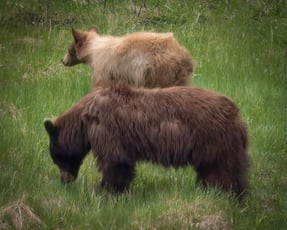

Eagle County Community Wildlife Roundtable
Spring is in the Air and so are Bears…& Trash
It’s time! Bears are coming out from their long winter naps. Typically bears hibernate from...
